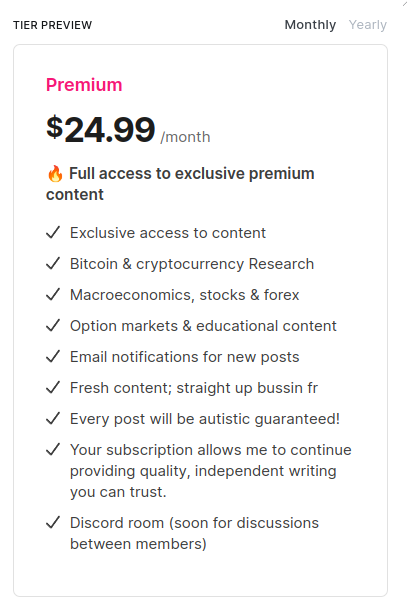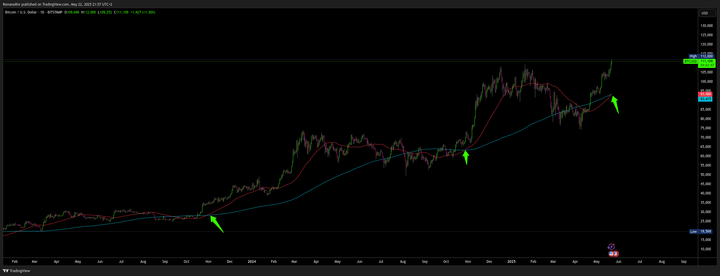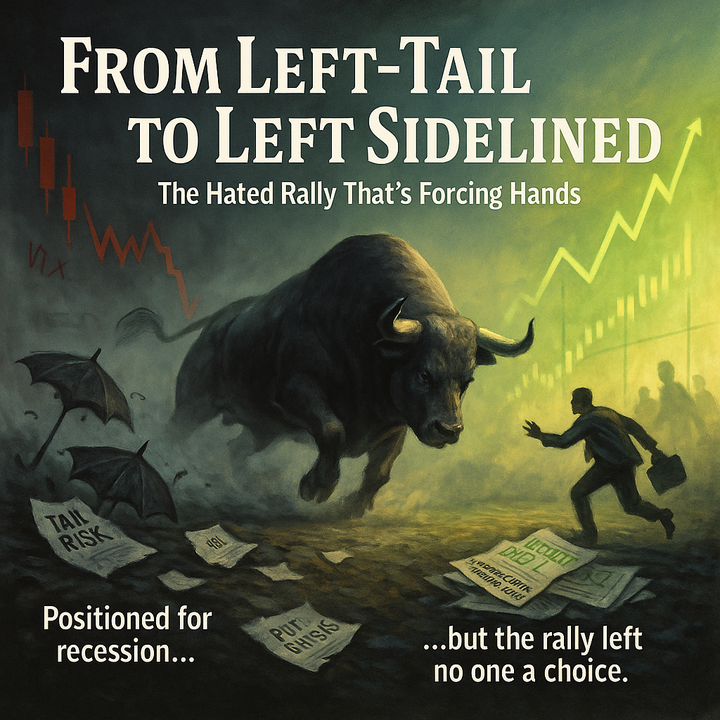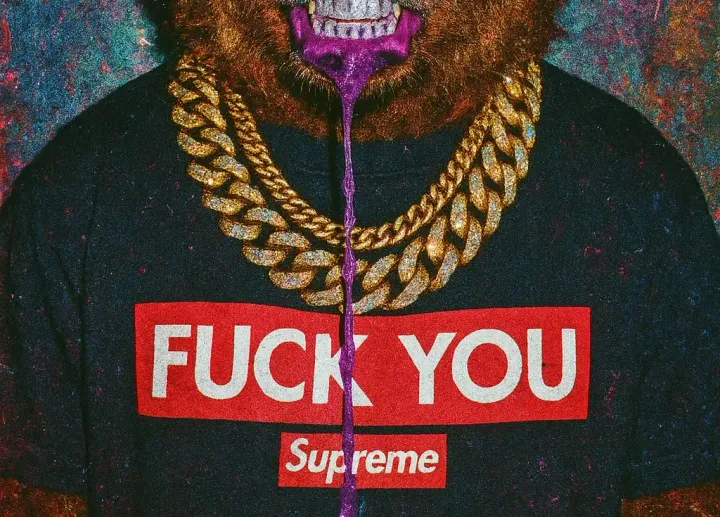Strategize: Prepare For A Last Rate Hike & Market Crash - part 2

The current banking crisis has resulted in uncertainty, prompting investors to discuss the responsibility of an Armageddon of Commercial Real Estate loans. Growing anxiety that commercial real estate may become this economic cycle's subprime.
I covered Commercial Real Estate in a previous large newsletter here which you can read for free even as a non-premium subscriber:
Part 1: https://www.romanornr.io/strategize-prepare-for-last-rate-hike-for-market-crash-march-30-2023/
The recent collapse of real estate loans has only heightened this fear. BofA's Chief Information Officer made a prediction in which he anticipates that the Federal Reserve will inject sufficient liquidity to offset not only the banking crisis but push risk assets higher.
If we look at Bitcoin, for example, that surely happened.
In hindsight, yes, I was long on SPX500, but apparently, I didn't get the memo about risk assets (which, of course, included bitcoin since it is a risk asset. That's a little bit embarrassing, of me considering the time I spent reading, analyzing and writing)
But as mentioned in my previous newsletter, with SPX500 targeting $4100-$4200
https://www.romanornr.io/strategize-prepare-for-last-rate-hike-for-market-crash-march-30-2023/ (Yes, you do have to read this article)
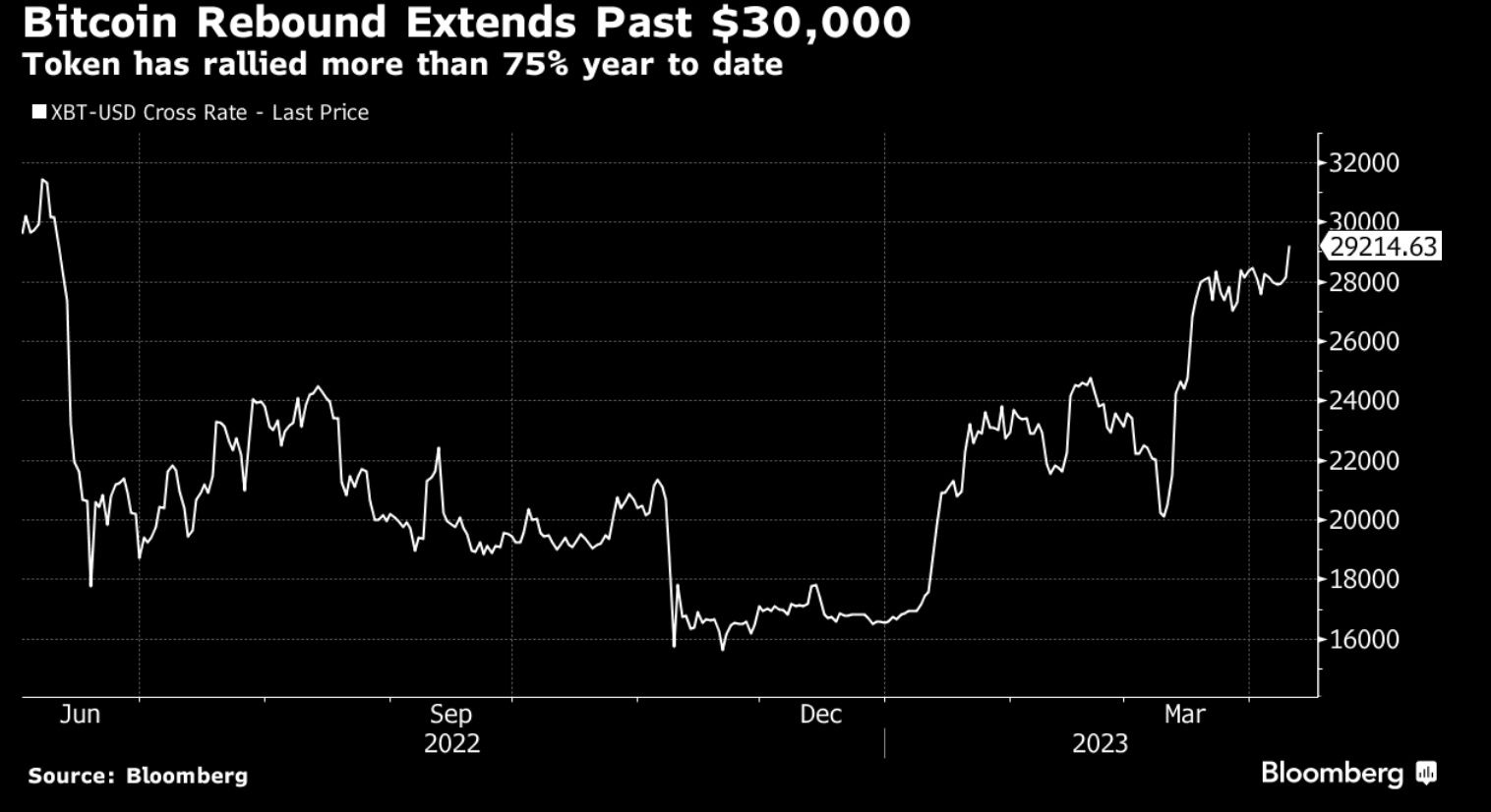
So narrator: The Federal Reserve injected nearly $500BN of newly printed reserves into the markets, and SXP500 jumped to $4150. The injection had done the trick. The markets and banks were saved (for now)
What's next?
BofA's Chief Information Officer is considering
"selling the last rate hike" on May 3rd.
Will this be the peak of the SPX rally, or will the markets surprise us yet again? Only time will tell.
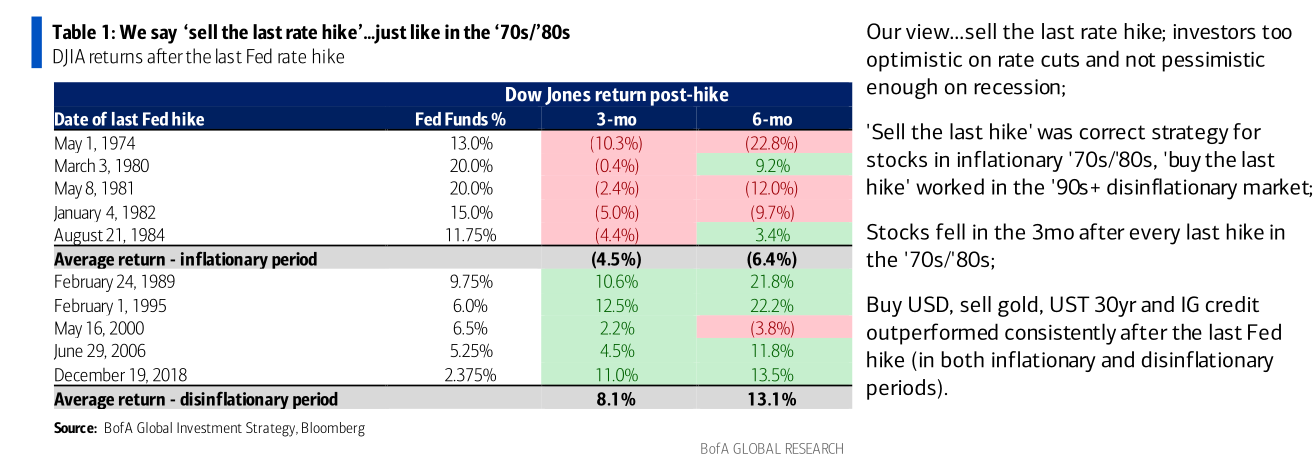
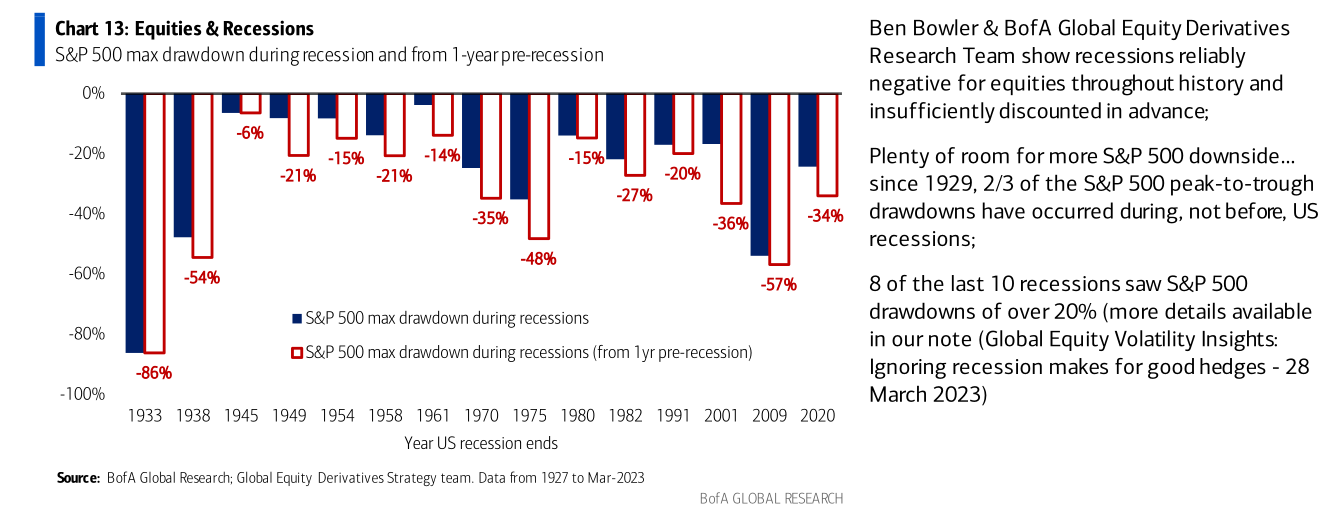
He explains why the rally will be stalled. He notes that the 46.3 reading from the ISM indicates an alarming contraction of manufacturing—and figures below 45 historically have always led to a recession in the U.S. over the last 70 years.
This will be confirmed by rising unemployment in the upcoming months.
I can already hear you, "Can you tell me more about ISM?"
Yes, this is, after all, an educational newsletter. I also write these newsletters for my own "knowledge base" :)
ISM
The ISM manufacturing index is a recurring survey that gauges the sector's health by collecting responses from over 300 manufacturing firms throughout the United States.
A reading above 50 indicates "expansion," whereas a reading below 50 suggests contraction.
The manufacturing activity experienced a decline for the 5th consecutive month.
In March 2023, the index fell to 46.3, the lowest level since May 2020, indicating that manufacturing activity was shrinking for the fifth consecutive month.
According to BofA's Chief Information Officer, the current situation is not merely a minor anomaly but rather an indication of an impending recession.
Whenever the ISM index drops below 45, it has consistently been followed by a subsequent rise in unemployment and a contraction in GDP within the next few months.
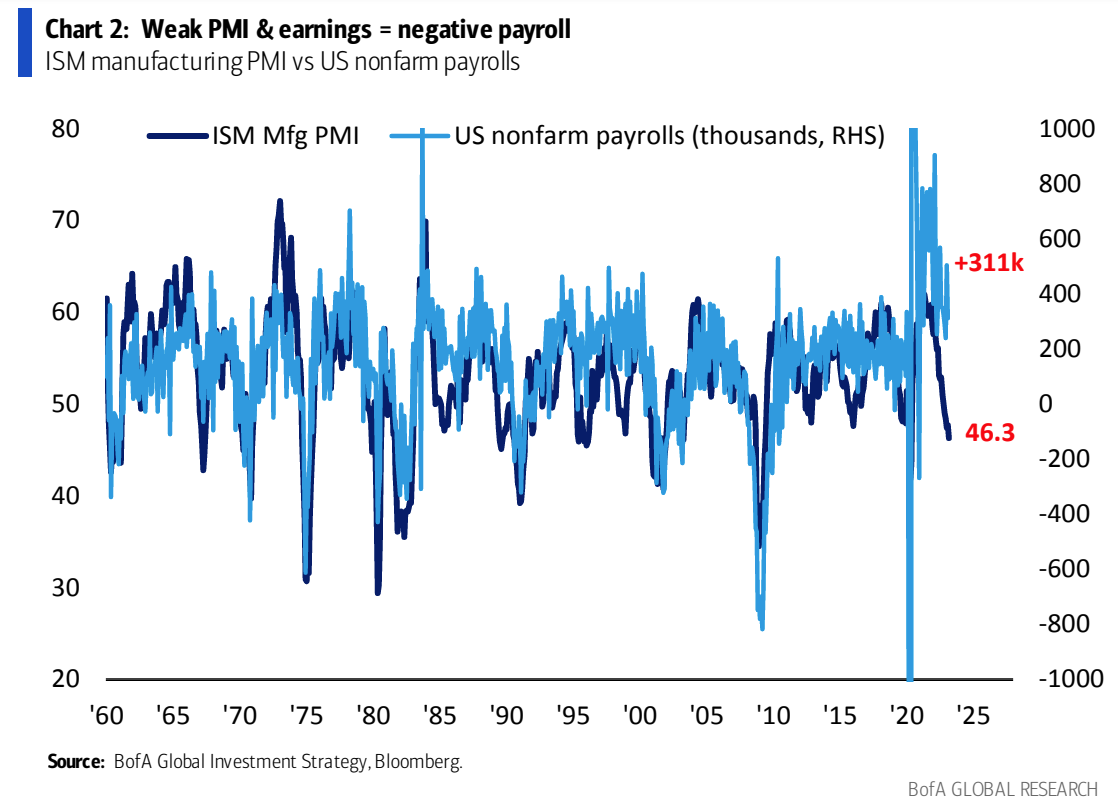
This trend will likely be confirmed by the worsening of other economic indicators, such as consumer confidence, business investment, and trade balance. BofA's Chief Information Officer suggests we should brace for a bear market and look for opportunities in defensive sectors, such as utilities, health care, and consumer staples.
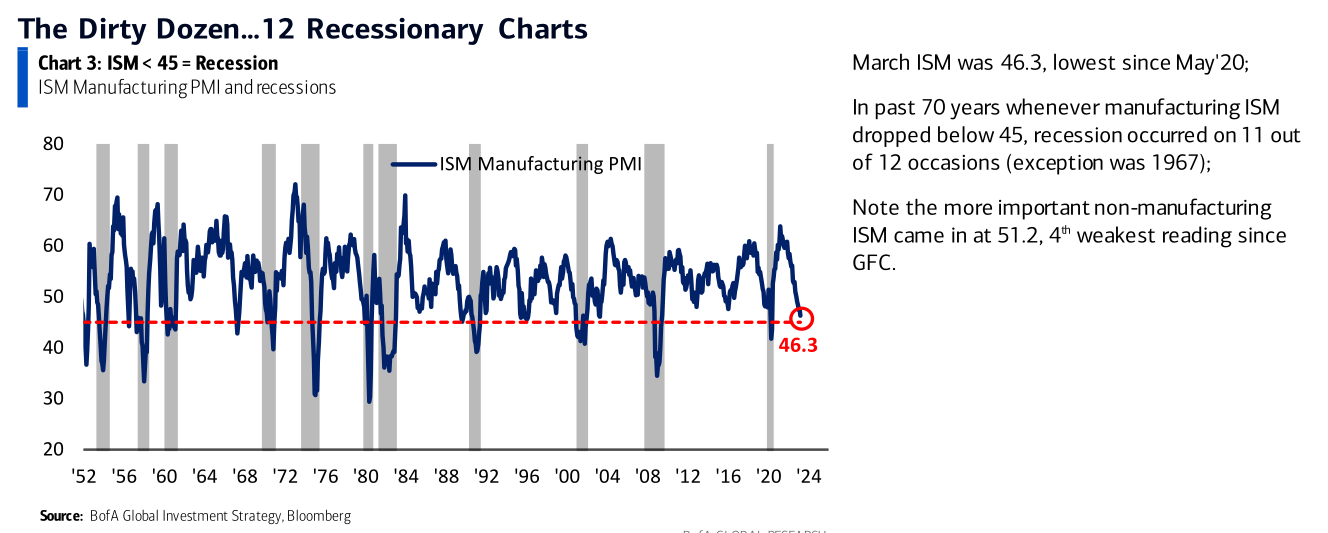
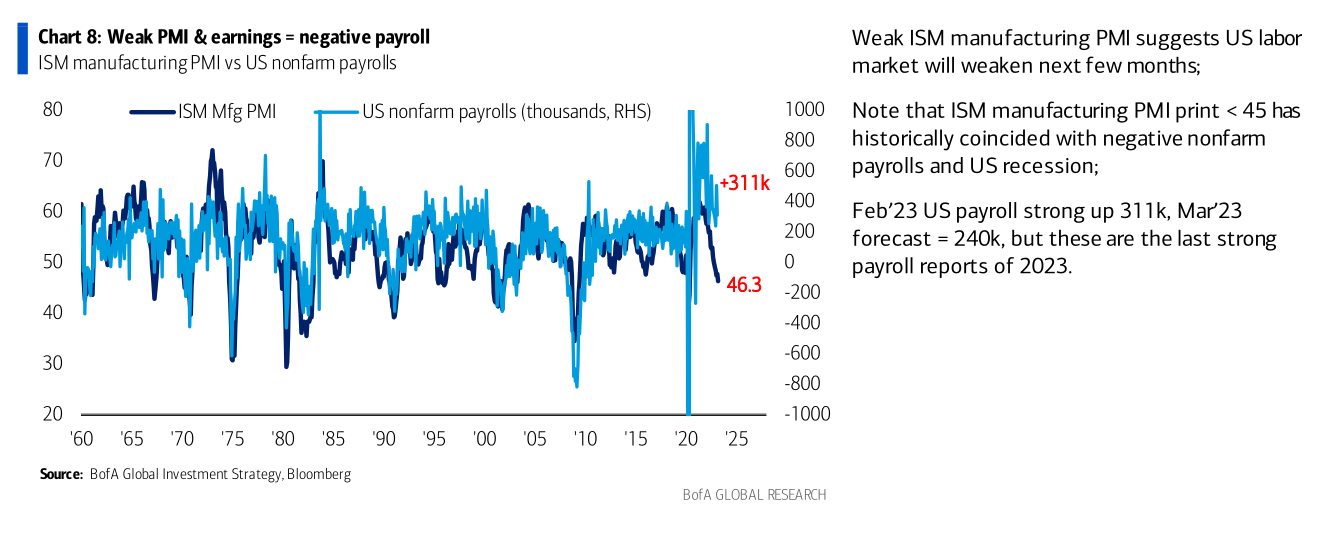
Before continuing reading, consider subscribing to the premium newsletter if you're enjoying it and getting value from it. Even if you don't trade, the airdrops can get your investment out of it.
Anyways you can continue to read further. The article doesn't stop here.
Where to trade McDonald's?
Rising U.S. Default Fears
The recent possibility of a US default has caused a shift in investor behavior, resulting in a mass exodus from banks. Cash inflows surged to $403.4bn over the past weeks, marking the highest figure since April 2020.
An effective approach to asses the US creditworthiness is to analyze the credit default swaps (CDS) on its sovereign debt, which provides insight into the market perception of the nation's financial stability.
Sounds familiar?
A Credit Default Swap (CDS) is a financial instrument that enables (institutional) investors to mitigate the risk of borrower default by paying a recurring premium to the counterparty in exchange for "insurance."
A positive correlation exists between the fee or spread and the perceived risk of default. The 5-year US Treasury CDS spread has surged from 12 basis points to 45 basis points over the last year.
This suggests that there are some players opting to hedge against speculation on a potential US default. The current level recalls memories of the peak observed in July 2011, when the US credit rating was downgraded due to a debt ceiling standoff, and during the global financial crisis of 2008-2008, when it reached 100 basis points.
Investors are displaying divergent views on the likelihood of a US default, with some anticipating it and opting for safe-haven assets like gold.
Over the same period, a noteworthy inflow of $2.7bn into gold has occurred. Additionally, inflows of $13.7bn investment grade (IG) and $4.9bn inflow into high yield (HY) have both reached their highest level since June 2021 and October 2020.
There has been a recent trade of outflow of $2.1bn from Treasury Inflated Protected Securities (TIPS) at a rate that has not been seen since May 2022. The bonds that adjust their principal based on changes in consumer prices are a concerning trend and suggest that investors are losing confidence in TIPS's ability to hedge against inflation.
Bank of America's high-net-worth clients have allocated their $3.0tn Assets Under Management (AUM) with 59.9% in stocks, 21.4% in bonds, and 11.8% in cash. Notably, high-net-worth clients bought the most bonds ever in Q1 of this year, with 40% of the bonds being in T-bills.
To visualize the text
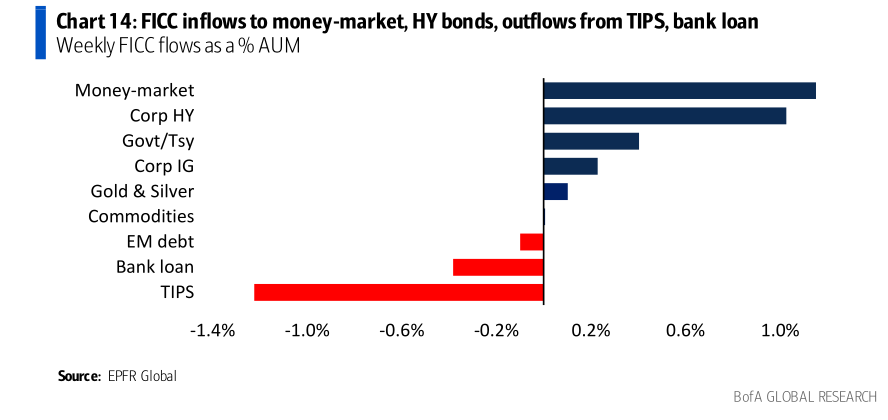
Preparing for a hard landing or soft landing
The rest of this article is for premium subscribers only. A Discord discussion channel for premium members has been included since today
A subscription is $25, which will also include airdrop hunting which should cover the subscription fees if you stay subscribed & committed.
